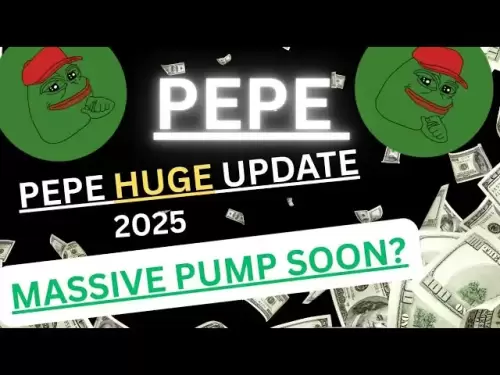 |
|
 |
|
 |
|
 |
|
 |
|
 |
|
 |
|
 |
|
 |
|
 |
|
 |
|
 |
|
 |
|
 |
|
 |
|
Cryptocurrency News Articles
Crypto Summit, White House, and Bitcoin Solaris: A New Era?
Jul 02, 2025 at 06:00 pm
Exploring the intersection of crypto policy in Washington and Bitcoin Solaris' innovative approach to mining and investment, amidst White House digital asset initiatives.

Crypto Summit, White House, and Bitcoin Solaris: A New Era?
Washington is buzzing about crypto, but while policymakers debate, Bitcoin Solaris is already making waves. Let's dive into what's happening at the White House and how Bitcoin Solaris is shaking up the crypto scene.
White House Crypto Initiatives: Regulation on the Horizon
The White House, along with key Republican lawmakers, aims to enact comprehensive market-structure rules for Bitcoin and other digital assets by the end of September. Senators Tim Scott and Cynthia Lummis are pushing for a framework that provides the industry with the “certainty and predictability” needed to keep crypto innovation in the United States. This includes clarifying which tokens fall under securities or commodities law, setting custody standards, and establishing safeguards for trading platforms. A separate stable-coin measure, the Genius Act, is also gaining momentum, with potential for White House approval soon.
Bitcoin Solaris: Mining for the Masses
While Washington talks regulation, Bitcoin Solaris is focused on returns for retail investors. Priced at $10 during its ninth presale phase, with a confirmed $20 listing price, Bitcoin Solaris is attracting new crypto entrants. What sets it apart? It's already distributing rewards, raising over $5 million, and pulling in over 11,500 holders before hitting a single exchange.
A Different Approach to Mining
Bitcoin Solaris takes a unique approach to mining. Instead of requiring specialized equipment, it uses the Nova App to enable mining from smartphones. Devices contribute idle CPU and storage to support the network and receive BTC-S tokens in return. This lowers the barrier to entry and brings mining back to regular users.
The Tech Behind It
The Bitcoin Solaris blockchain is built on a dual-layer model. The base layer uses Proof-of-Work and Proof-of-Capacity, while the Solaris Layer adds Delegated Proof-of-Stake and Proof-of-Time. The result is high-speed transaction processing (10,000 TPS), finality under two seconds, and 99.95% energy efficiency compared to Bitcoin.
Transparent and Predictable Economics
The BTC-S token has a clear financial structure: 21 million total supply, 4.2 million allocated for presale. There are no cliffs, no hidden team allocations, and no emission schedules to dilute price action. This straightforward setup has drawn comparisons to Bitcoin’s early days.
Security and Future Developments
Bitcoin Solaris has undergone full audit verification via Cyberscope, with mobile protocol logic audited separately by Freshcoins. The core development team has also passed KYC verification. Upcoming deliverables include a public testnet, full developer toolkit, and major wallet upgrades. The Mining Power Marketplace, currently in development, will let users monetize computational power or rent access to it using BTC-S.
My Take
Bitcoin Solaris' approach to making crypto more accessible and environmentally friendly is pretty cool. The ability to mine using just a smartphone is a game-changer, potentially bringing more people into the crypto world. It's definitely a project to watch, especially with its focus on transparency and community engagement. It is important to remember that all crypto investments carry risk, and one should conduct thorough research before investing.
Final Thoughts
As Washington navigates the regulatory landscape, projects like Bitcoin Solaris are busy building and innovating. It's an exciting time for crypto, with new opportunities emerging every day. Who knows? Maybe one day, you'll be mining BTC-S while waiting for your latte. Keep an eye on this space, folks!
Disclaimer:info@kdj.com
The information provided is not trading advice. kdj.com does not assume any responsibility for any investments made based on the information provided in this article. Cryptocurrencies are highly volatile and it is highly recommended that you invest with caution after thorough research!
If you believe that the content used on this website infringes your copyright, please contact us immediately (info@kdj.com) and we will delete it promptly.





























































